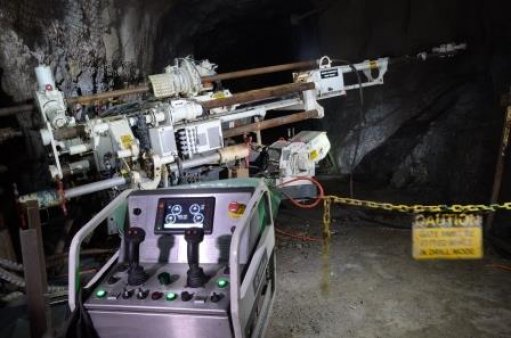
DRILL TIME A Boart Longyear electrohydraulic drill rig will be used for the exploration programme
Drilling solutions provider Lesedi Drilling was appointed to explore the Kimberlite country rock contacts underground at a Limpopo-based diamond mine in January, with the programme scheduled for completion in the third quarter of 2022.
A Boart Longyear LM90 electrohydraulic drill rig will be used for the exploration programme, with the drilling involving just under 5 000 m of HQ and NQ size triple tube core drilling.
Lesedi group CEO Gordon Hogan adds that Lesedi Drilling has several of these LM90 drills available, noting that they have been modified by the original-equipment manufacturer to drill in confined spaces. This makes the LM90 drill the ideal solution for this contract.
The LM90 is powered by a 90-kW electric motor and is modularly designed, similarly to other LM rigs, allowing for easy tailoring and upgrading as and when specific needs and conditions change.
He elaborates that, with the assistance of a positioner and a turntable, the drill is capable of drilling holes at all angles. The LM90 features a load-sensing hydraulic system, proportional controls, a failsafe rod clamp, built-in troubleshooting, and a spooling device.
These features make the LM90 a highly reliable drill in harsh conditions, says Hogan. Core recovery must be 90% and collected in triple Perspex plastic tubes to protect it from moisture in the atmosphere.
“The core must be orientated, and the hole gyroscopically surveyed so that there is no doubt as to the original position of the core in the ground.”
Hogan warns that for this project, 30% of the ground is expected to be difficult and poorly competent kimberlitic rock.
Meanwhile, in 2017, Lesedi Drilling was awarded a contract by the International Continental Scientific Drilling Programme (ICDP) to drill holes to recover core in earthquake zones located 3.5 km underground.
Hogan explains that the ICDP is made up of 22 member countries and is based at the German Research Centre for Geosciences, in Potsdam, in Germany. South Africa is a member, as are the United States, China, Japan, and many scientific institutions in European countries.
“The core recovery aspect of the drilling was extremely important because the scientific community was looking for microscopic details of alterations to the rocks caused by seismogenic activity.”
Further, for this contract, the ICDP was searching for evidence of ancient bacteria, which some scientists believed existed in rocks at that depth.
As with the diamond mine tender, core recovery and core orientation are the key skillsets in successfully executing work in the drilling sector and Lesedi Drilling has demonstrated its skills to an international audience, Hogan concludes.